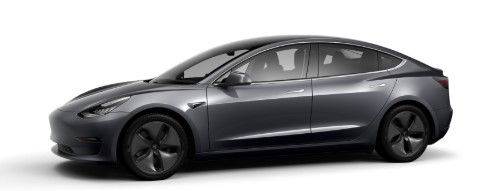
by Larry Magid
This post first appeared in the Mercury News
As a Silicon Valley resident, I’m used to seeing autonomous cars from Waymo, Nuro and other companies being tested on local roads by professional drivers, and now I’m one of them. But, instead of being paid to test Tesla’s autonomous driving technology, I paid $7,000 (now $10,000 or $200 a month) for the privilege. And, after a couple of weeks of testing its “Full Self Driving (FSD) beta, I’m disappointed by its current behavior but optimistic it will get a lot better over time. To be a tester, you have to have paid for FSD and agree to let Tesla automatically monitor your driving to see if you qualify based on how well you avoid hard braking, forward crash warnings, aggressive turning, unsafe following and forced autopilot disengagement after “Tesla vehicle has determined that you have removed your hands from the steering wheel and have become inattentive.” It took me awhile to get my safety score high enough to get the beta, but I did reach that milestone.
Because it’s not yet ready, I turn it off for routine driving but use it for testing purposes. Although most of the time it drives as well or better than most humans, it does make some mistakes like consistently turning right from the left lane on city streets or making jerky left turns where I worry it might cross over to the wrong side (it corrects but it’s still scary). While it always stops at stop signs, red lights and for traffic, it sometimes brakes harder than I would. While it’s impressive, it’s frankly a little scary for me and my passengers. When I use it, I feel that I have to be extra attentive. Not only do I have to avoid my own driving mistakes and watch for mistakes from other drivers, I now have to make sure the car isn’t making a mistake. The good news is that Tesla frequently updates and improves the software. It’s already gotten an update since I started testing it.
Many tasks are automatic, but the driver must still pay close attention and be ready to take control at any time. Indeed, when you enable the feature, you need to acknowledge a disclosure that says, “it may do the worst thing at the wrong time so you must always keep your hands on the wheel and pay extra attention to the road.” That’s not just a suggestion. Even though I always have my hand on the wheel, my self-driving was temporarily disabled because I wasn’t putting enough pressure on the wheel, so it incorrectly thought I wasn’t holding it. It will also disable it if the cabin camera senses you don’t have your eyes on the road or if it sees you holding a phone.
Unfulfilled promises yet steady improvement
In January 2021, CEO Elon Musk told analysts, that he was “highly confident the car will be able to drive itself with reliability in excess of a human this year.” He later admitted that “it’s really quite, quite tricky, but I am highly confident that we will get this done.” I agree. Someday, Tesla and other companies will be able to release self-driving software that will do a better and safer job than most human drivers. But that day isn’t here.
Tesla has been working towards self-driving for several years. In 2014 Tesla started equipping its Model S with hardware that could automatically brake, steer and accelerate. A year later it introduced software that combined cruise control with autosteer on highways and, in 2016 announced that all new Teslas would be equipped with self-driving hardware. CEO Elan Musk is infamous for making promises that he can’t deliver on time. In October 2019 he said, “Next year for sure, we will have over a million robotaxis on the road.” It’s almost 2022 but today’s Teslas are nowhere near ready to be used as robotaxis. But, while far from what he promised, Tesla’s existing software — even without the FSD beta, is still impressive.
When I bought my Model 3 in 2018, I paid an additional $5,000 for “Autopilot,” which — despite its name — was not able to drive the car by itself. What it did was steer the car on highways. My first extensive use of that early autopilot was a 1,100-mile round trip drive to CES in Las Vegas, which was a lot more relaxing than having to manually steer. Like my 2016 Prius, the car would also slow down or stop based on speed of the cars in front of it. Autopilot came with other features including “summon” which let you move the car forward or backward with a smartphone app and self-parking. In May of 2019 Tesla introduced “Navigate on Autopilot” which enabled the car to automatically change lanes on highways and even change highways once you turn on the turn signal. It isn’t flawless but it’s quite good.
One of the things I love about Tesla is that the software is frequently updated with either new features or bug fixes and, since the introduction of Autopilot, it’s gotten progressively better. The company now includes a basic version of autopilot with autosteer and traffic aware cruise control at no extra charge, but if you want navigate on autopilot, summon, auto-lane changing and auto-stop at stop signs and red lights, you need to buy the $10,000 (or $200 a month) so-called “Full Self Driving” option.
While I’m not thrilled about having to pay to be part of a beta program and I do worry about inattentive drivers failing to monitor their use of the beta FSD, I do agree that it’s an effective way to test the software with millions of miles of use. I pray that no-one is killed or injured during the testing phase, but I am confident that we will eventually get to a point where cars are fully automated and much safer than they are today./aside>